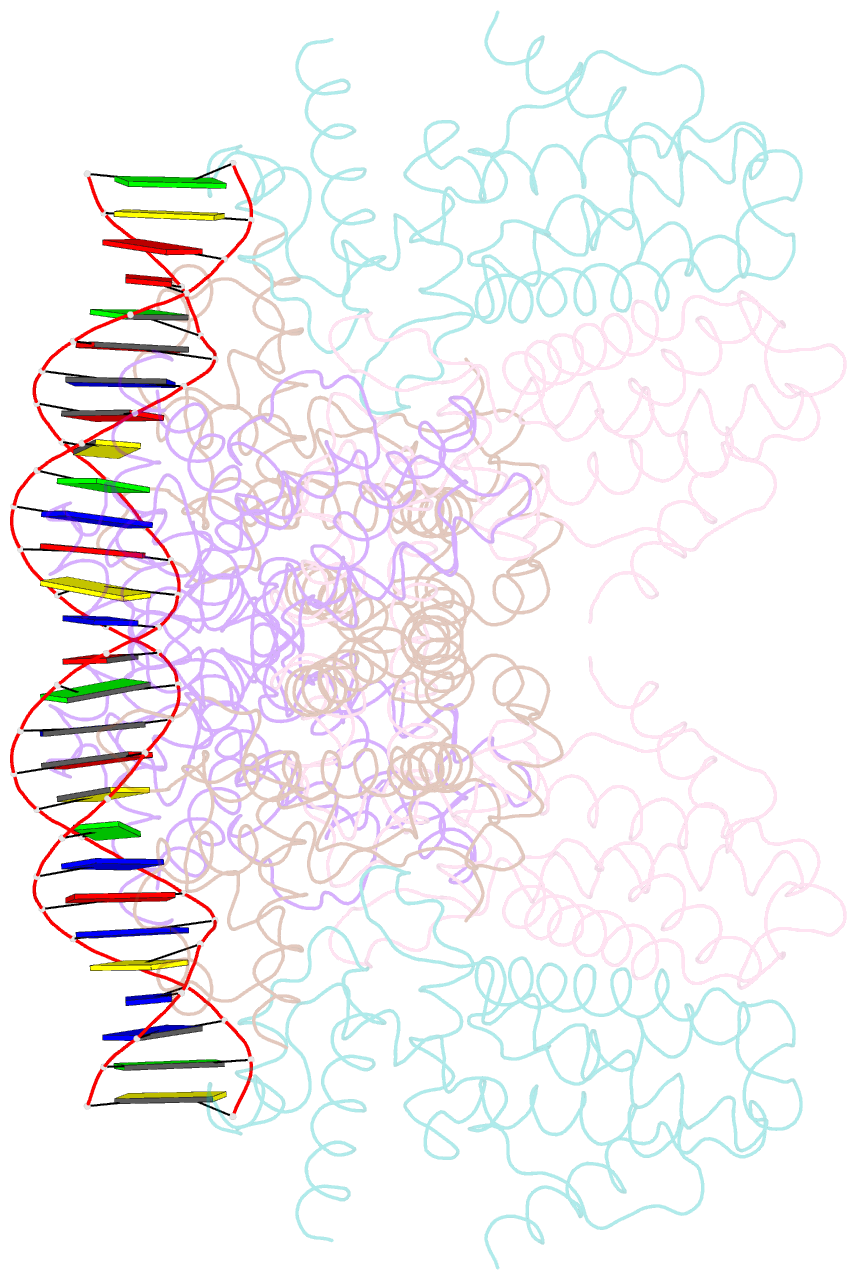Summary information and primary citation
- PDB-id
- 6wpa; SNAP-derived features in text and JSON formats;
DNAproDB
- Class
- DNA binding protein-DNA
- Method
- X-ray (3.09 Å)
- Summary
- Structure of avar1 bound to DNA half-site
- Reference
- Kapoor I, Olivares P, Nair SK (2020): "Biochemical basis for the regulation of biosynthesis of antiparasitics by bacterial hormones." Elife, 9. doi: 10.7554/eLife.57824.
- Abstract
- Bacteria that dwell in soil known as actinobacteria are the source of many drugs that are used to treat cancer and infectious diseases in humans. In their natural environments actinobacteria produce these drugs, or at least similar compounds, to compete with neighboring microbes for food or to kill their enemies. However, when researchers culture actinobacteria in the laboratory, the bacteria often produce little or none of these compounds. Some actinobacteria produce a compound called avermectin. This compound is closely related to a drug used to treat an infectious disease known as river blindness, which is a common cause of sight loss in people living in West Africa. A bacterial hormone known as avenolide regulates when the bacteria produce avermectin by binding to a receptor known as AvaR1. But the precise details of how this process works remained unclear. To investigate how avenolide binds to AvaR1, Kapoor, Olivares and Nair developed a new strategy to produce large quantities of avenolide in the laboratory from commercially available molecules. A three-dimensional structure of AvaR1 was then generated showing the receptor on its own, bound to avenolide or bound to a short DNA molecule. In the absence of avenolide, AvaR1 sits on DNA. However, binding to avenolide causes AvaR1 to move off the DNA. This revealed how the binding of avenolide changes the receptor protein so that it can be released from DNA to allow the production and release of other small molecule compounds. Further experiments used these structures as guides to identify 90 new species of actinobacteria that may respond to avenolide and other similar bacterial hormones. Understanding how bacterial hormones stimulate actinobacteria to produce avermectin and other compounds will aid efforts to extract new compounds from soil bacteria that have the potential to treat cancer or infectious diseases.





